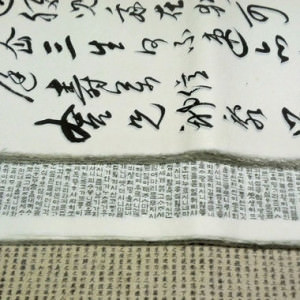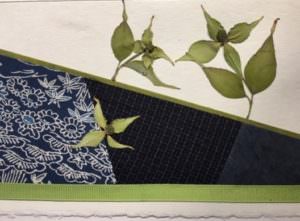
The early 1970s. Manhattan. Suzanne Lee started in the fashion industry. For nearly 25 years, she built design lines in Japan, Korea, Taiwan, Hong Kong, The Philippines, China, Thailand, and India. The travel awakened a cultural perspective and love of contemporary Asian art, calligraphy, antique Chinese furniture, and Japanese papers & gardens.
By 1981 Suzanne’s love of all things Asian created the Chi-lin art gallery, housed in a circa 1780 farmhouse in Laconia, New Hampshire. Initially, Chi-lin was an escape from the hectic New York day-to-day. The gallery later moved to its own building surrounded by a Japanese tea garden called Satori. Suzanne remembers with delight buying elegant tapestry-covered books & beautiful brushes in a Shanghai paper store – wandering the back streets of Tokyo to find the Washi Museum, spending hours in Kyoto temples surrounded by master paintings and gardens, and sitting with fiber artist Hisako Sikijima, in her tiny studio.
In 2017 The Lakes Gallery at Chi-lin moved back to its farmhouse in Laconia, surrounded by the Asian-inspired art so very much loved. Winters are full of plans for upcoming shows and opportunities to visit and work with other artists and work on original designs. Exhibits run online and by appointment year-round. Varied hours, events, and poetry readings lace the late spring and continue through late fall.
Note: On Suzanne’s site, read the series about Process—the chronicled steps in creating art, the time, consideration, and work behind a creative piece. These are quick reads from several artists. Very enjoyable.
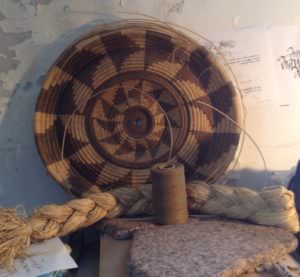
Fiber Work: Suzanne started with wax linen and raffia over reed-coiled baskets. Although time-consuming, the uniqueness of the baskets (made dry) – makes magic when molded. Suzanne continues to make baskets. Additional calligraphy creates her signature pieces.
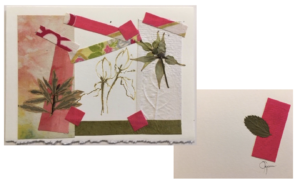
Suzanne now has a studio for calligraphy and newfound knowledge of Islamic geometry and miniature painting. Thanks to online classes at The Prince’s Foundation School of Traditional Arts in London. She believes she is one of the few not using watercolors, preferring either thinned-down Schmincke Calligraphy Gouache or Schmincke Aero Color (luscious colors and metallics that are easy to mix). As a calligrapher, she uses raised gold leaf in her work, tooling to add depth and texture to nature’s creations. Suzanne often tries new colors and leafing techniques as minis for practice, usually ending up on cards. Since lockdown, her fairytale, incorporating newly learned techniques, comes to life — of course, this is a story about trees & flowers.
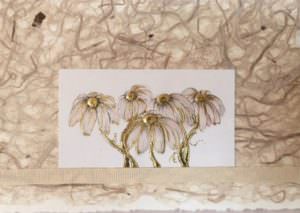
Suzanne teaches very personalized Nature Card workshops limiting participation to four. Contact Suzanne with interest.
. . . it’s my favorite way to share an art anyone can have fun learning and easily continue on their own.
For many years Suzanne has made and taught the how-to’s to dried botanicals, Asian papers, ribbons, raised gold leaf, and a unique form of Japanese fabric collage, creating handmade books and cards. Handmade books and cards combine her passion for gardening with Asian fabrics and paper. When there is a need for expression, Suzanne carefully presses leaves, flowers, ferns, and grasses during summer and fall for a winter cache.
With Paper Connection’s Paper Pastiche each month I get a sampler of papers to consider for my workshops and play.
If you visit the Delray Beach area in Florida, there is a marvelous exhibit at Morikami Museum and Japanese Gardens.
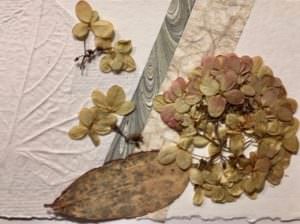
visit: thelakesgallery.com
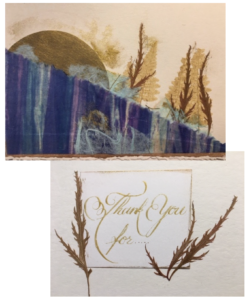
contact: suzanne@thelakesgallery.com
www.facebook.com/chilinasianarts
www.instagram.com/thelakesgalleryatchilin/

